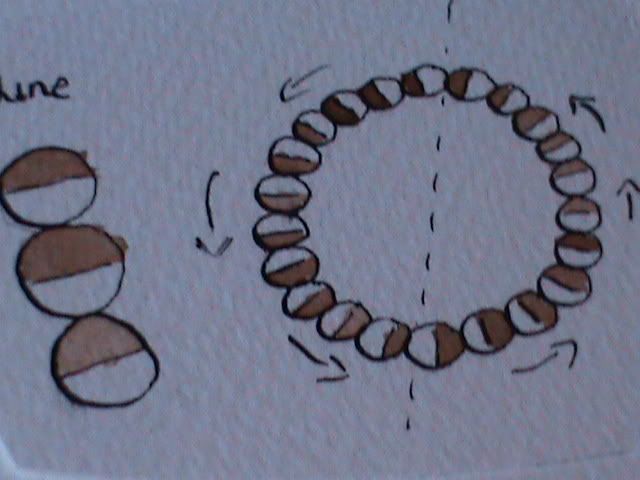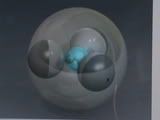Now. The idea is that composite luminons make up all known particles. And the model proposes that the photon is a composite requiring a quark to advance the 'stability' of the particle - else it would decay into the field.
Then how many composites can be sustained by the field? This - again - needs a bit of visualisation. Imagine that the field is in the background and it holds the particle that has earlier been ejected from the field. The proposal is that it moves in one direction - that single justification - indicating that the 'part' of each field is 'charged'. It has a defined direction. That, single charge would then have the characteristics of a magnetic monopole.
If two particles can sustain an orbital relationship then so can three. The one quark would be four times smaller than the zipon in the field (it's quark) the next would be the same size as the zipon in the field, and the third would be four times bigger. I'll break off here to draw this.
Then how many composites can be sustained by the field? This - again - needs a bit of visualisation. Imagine that the field is in the background and it holds the particle that has earlier been ejected from the field. The proposal is that it moves in one direction - that single justification - indicating that the 'part' of each field is 'charged'. It has a defined direction. That, single charge would then have the characteristics of a magnetic monopole.
If two particles can sustain an orbital relationship then so can three. The one quark would be four times smaller than the zipon in the field (it's quark) the next would be the same size as the zipon in the field, and the third would be four times bigger. I'll break off here to draw this.




Comment